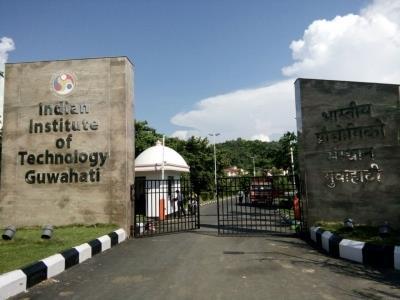
IIT-G, ICL develop nanoparticle to boost LED performance
Guwahati, Aug 7 (IANS) Researchers at the Indian Institute of Technology Guwahati (IIT-G) and Imperial College London (ICL) in the UK, have developed a tailored 'meta-grid' of nanoparticles that could make light-emitting diodes (LEDs) brighter, energy-efficient and durable.
Meta-grid or metamaterial grid is a specifically patterned array of nanoparticles acting as metamaterials, capable of exhibiting extraordinary optical properties.
The research team has developed a nanoparticle 'meta-grid', which needs to be placed at an appropriate location within the epoxy casing of the LEDs, for improving light output from LEDs.
A meta-grid is a specially-designed, optimised, a two-dimensional array of specific nanoparticles, of size much smaller than the wavelength of light, according to the study published in 'Light: Science & Applications' journal.
"With the continuous advancement in nanofabrication technology, it is now possible to fabricate metallic nanoparticles that have a very narrow spread," Debabrata Sikdar, Assistant Professor, Department of Electronics and Electrical Engineering, IIT Guwahati, said in a statement.
According to the institute, the research team has developed this novel scheme of boosting the transmission of light generated inside an LED chip across the LED-chip/encapsulant interface.
"This is achieved by reducing the Fresnel (the thin piece of plastic) reflection loss at the chip/encapsulant interface, within a fixed photon escape cone, based on tuning the destructive interference phenomena with help of the 'meta-grid'," the researchers said.
The technique has revealed optimal design parameters for such meta-grids to produce greater light output over any narrow/broadband emission spectrum, besides boosting LEDs' lifetime by eliminating heating of the chip from unwanted reflections within the chip.
The technique is deployable by itself or in combination with other existing techniques applied for increasing LED's efficiency.
The entire original theoretical framework needed for the invention has been developed in-house and is rigorously tested against standard commercial simulation tools.
The research team plans to fabricate a prototype device within one year and corroborate their theoretical predictions with experiments. The theoretical models, developed by the team, allow finding out the optimal conditions for the design of the nanoparticle 'meta-grid' layer.
The research team believes that the work will definitely have a global impact on the versatile LED-based applications and their multi-billion-dollar market worldwide.
"In this invention, the effects of the 'meta-grid' on the standard commercial LEDs, based on group III-V materials are demonstrated," Sikdar said.
--IANS
bu/sdr/

Legal Disclaimer:
MENAFN provides the
information “as is” without warranty of any kind. We do not accept
any responsibility or liability for the accuracy, content, images,
videos, licenses, completeness, legality, or reliability of the information
contained in this article. If you have any complaints or copyright
issues related to this article, kindly contact the provider above.


















Comments
No comment